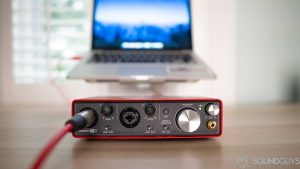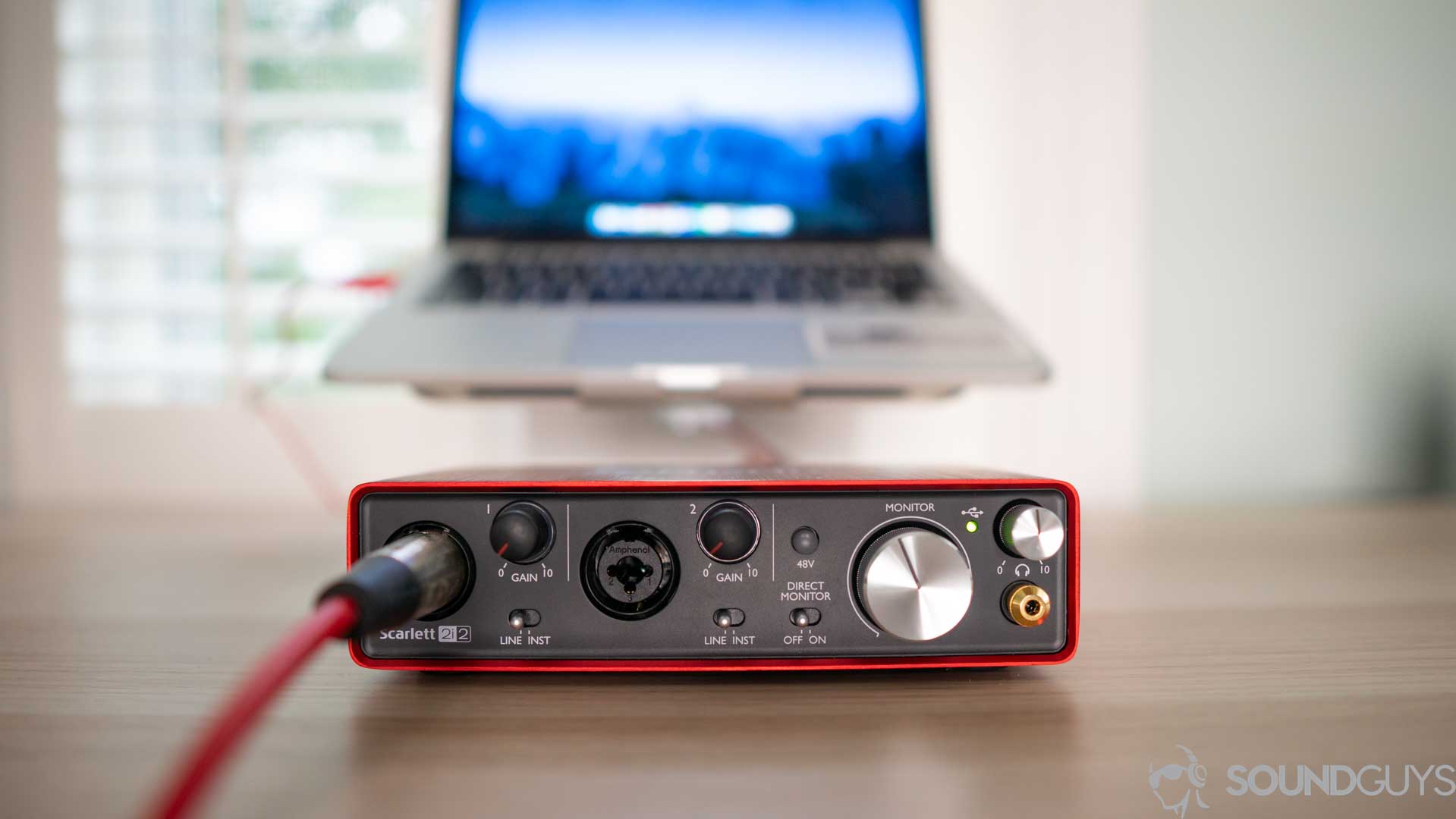A sound card, also known as an audio card, is a computer hardware component that allows your PC to output audio through speakers or headphones and record audio input from microphones or other devices. Basically, it’s what gives your computer the ability to play and record sound.
Most modern computers come with a basic onboard sound card, but for higher quality audio, especially for gaming, music production, or podcasting, you’ll want to invest in a dedicated sound card.
Key Features to Look for in a Quality Sound Card
There are a few key features to consider when choosing a sound card:
1. Sample Rate and Bit Depth
The sample rate and bit depth determine the quality and resolution of the audio. For most recording needs, aim for at least 24-bit and 96 kHz. This provides a high resolution that will capture the nuances of vocals and instruments.
2. Inputs and Outputs
Look for multiple inputs and outputs, like XLR, 1/4 inch, and RCA. This allows you to connect professional microphones, instruments, and monitors. For podcasting or streaming, two XLR inputs are good, while music production will benefit from 4 or more inputs.
3. Software Bundle
Many sound cards come with useful recording software to get you started. Look for options that bundle Pro Tools, Ableton Live Lite, or similar digital audio workstations. Some also include plugins like virtual instruments, effects, and sample libraries.
4. Compatibility
Ensure the sound card is compatible with your operating system and any software you want to use. Most are compatible with Windows and Mac, but some only work with one or the other. Also, check that it works with your DAW of choice before purchasing.
5. MIDI Support
For music production, MIDI input and output allows you to connect MIDI controllers, synthesizers, and other gear. If you work with virtual instruments and MIDI, MIDI support is a must.
You can buy it from Jumia using the link below:
Top Sound Cards on the Market Today

The following are top two sound cards on the market today:
1. Creative Sound BlasterX AE-5
For serious gamers and audiophiles, the Creative Sound BlasterX AE-5 is a top-of-the-line sound card that delivers an unparalleled audio experience. It features a high-end ESS Sabre9006 DAC that supports 32-bit/384 kHz playback with a 122 dB signal-to-noise ratio for high-resolution audio. The sound card has customizable RGB lighting that syncs with your gameplay.
The AE-5 comes with discrete 5.1 channel output for surround sound speaker systems. It supports virtual 7.1 channel audio for headsets and has a built-in headphone amplifier to drive high-impedance headphones. The Sound BlasterX Acoustic Engine suite gives you full control over your audio with intelligent equalizers, voice enhancement, and bass boost.
For less than $150, the AE-5 offers audiophile-grade components in an affordable package. It’s an excellent choice if you want to seriously upgrade from your onboard audio for both gaming and music listening. The high-end DAC and amplifier provide crystal clear sound with a wide soundstage. The only downside is it requires a free PCIe slot in your PC.
2. ASUS STRIX RAID DLX
The ASUS STRIX RAID DLX is another high-performance sound card targeted at gamers and audio enthusiasts. It features an ESS Sabre9016 DAC, Cirrus Logic CS5361 ADC, and Texas Instruments RC4580 amp for lossless audio playback. It has optical, coaxial and stereo line inputs along with stereo line outputs.
This PCIe sound card supports 7.1 channel audio and virtual surround sound. It comes with Sonic Studio III software for tuning audio settings, creating equalizer profiles, and adjusting bass levels. The STRIX RAID DLX is a solid, well-built sound card that significantly improves your computer’s onboard audio for an immersive gaming experience.
At around $190, the STRIX RAID DLX is on the higher end of sound cards but still costs less than many external DAC/amps. For high-resolution gaming and music, it delivers an audible upgrade over typical onboard audio solutions. The sound quality and amplification are superb, especially for the price. The only minor complaints are a lack of swappable op-amps and limited connectivity options.
How to Install and Set Up Your New Sound Card
The following are tips on how to install and set up your new sound card:
1. Install the Hardware
Turn off your computer and unplug the power cable. Open the case and locate an expansion slot—either PCIe or ISA—and install the sound card. Secure the card in place, put the cover back on, and boot up your computer.
2. Install the Software
Once your PC has started up, you may be prompted to install the driver software for your new sound card. If not, download the latest drivers from the manufacturer’s website and run the installation file. The software will detect your sound card model and install the proper drivers. You may need to restart your computer after the installation completes.
3. Configure the Settings
Open the software interface for your sound card, which will allow you to adjust various audio settings. Set the playback and recording devices to your new sound card.
You can equally adjust things like:
- Sample rate: The higher the sample rate (ex. 96kHz), the better the audio quality. But higher rates use more CPU power.
- Bit depth: 16-bit or 24-bit are common. 24-bit provides better dynamic range.
- Channels: 2 channels for stereo or more for surround sound.
- Enhancements: Options like virtual surround, bass boost, noise reduction, etc. Enable or disable to your liking.

READ ALSO- Samsung Soundbar Review 2023
Conclusion
In conclusion, hope you have learnt a lot in this article About the Sound Card. With some experimenting in the software interface, you will find the settings that provide the best audio experience for how you use your computer. Do well to always visit our website for more information like this.
